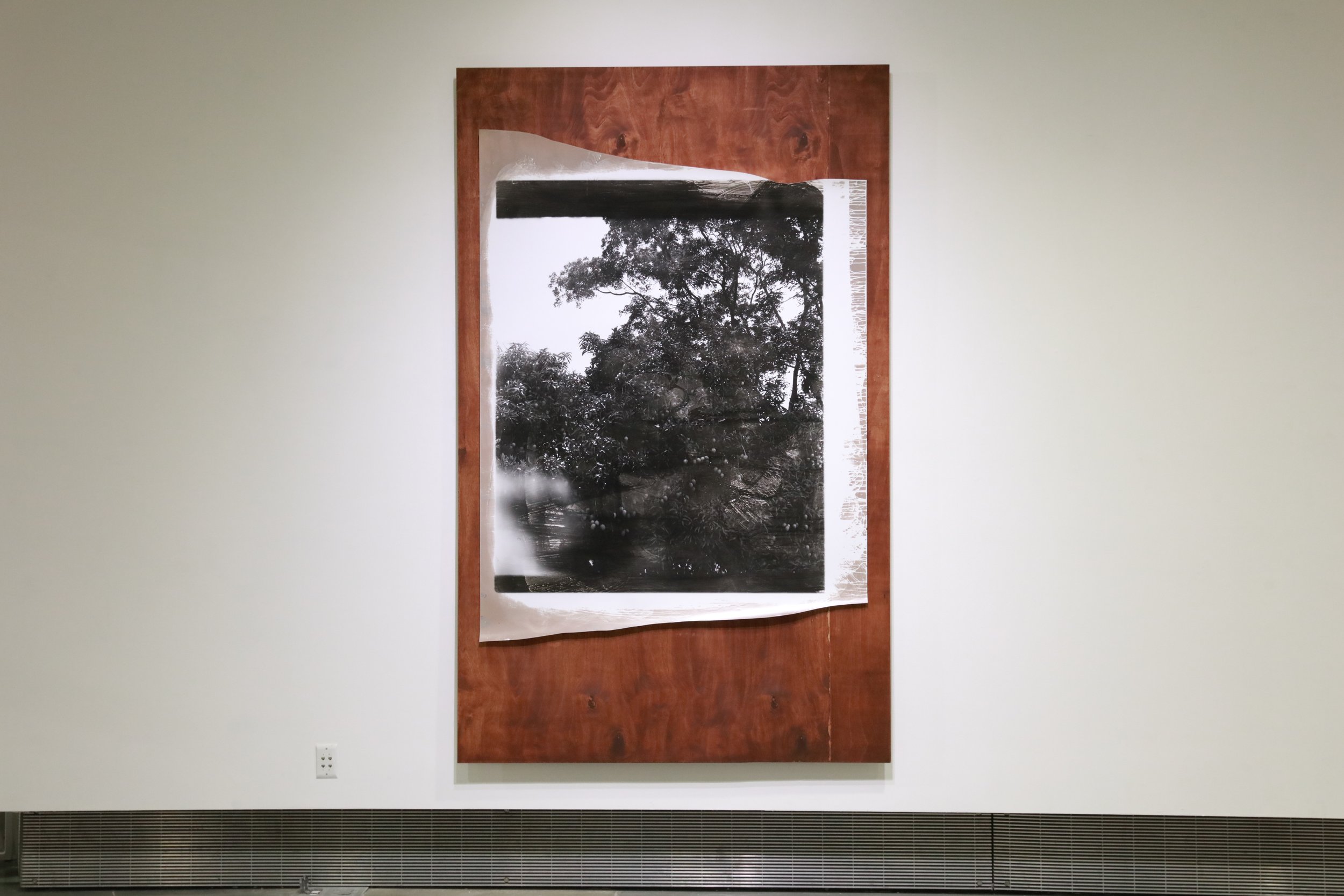-PAGE UNDER CONSTRUCTION-
NELWAT
Thesis exhibition April 4th - April 20th 2025
Having left my home left a taste of treason within my body.
I have yet to return fully,
and witness life again;
life as I left it, that is
That life will never be found.
As Espino said “De la nostalgia patria del…que no ha vuelto a ver una rama de maquilishuat en flor” – of the patriotic nostalgia he… who has not had the chance to see a branch of a Maquilishuat in bloom.”
I haven't seen one in 15 years.
In the body of work Nelwat, I think of trees as markers of history, geography and knowledge. In the “Americas” they currently mark a post colonial period, and exist as a temporal record of the passage of time, potentially transcending eras since a colonial period. Geographically trees have traversed seas, and have become part of other regions as subjects of colonial explorations. At times locals have no recollection that these beings once didn’t belong in the “Americas” such as Mangos which travelled from India, to Africa and subsequently to “America” through the middle passage. As markers, trees not only trace time, memory and history, but also adorn the land. In the region where I was born - Kuskatan, now known as El Salvador; we use them as a marker for orientation. El Salvador is the smallest country in the American continent, and it can be crossed by car in five hours the long way. Growing up we never used maps to get around instead landmarks guided us through space. Mango trees, Ceibas, Maquilishuat and a myriad of fruit trees, tend to serve as a physical marker to orient us in the direction we are headed, especially outside of the capital. “Si ves el palo de mango por la piedra, ya te pasaste”.
More broadly, my work explores sensations of movement, movement as forms of migration; migration of peoples relocating/reorienting geographically, language/linguistically, and bodily. In my artistic practice I play with translation and interpretation in the visible spaces of migration. These different sets each have their own unique understandings and socializations; while I might be understood in one setting, that understanding might completely differ in another. These perceptions are informed through indexicalities, urban planning, and topographies which differ based on regions, culture and access. That is what my home is to me— my body, my language, and my land. I move between, across and along the delineations of this triangulation. The triangulation connects the physical migration of land, the language, and the body within a scope of cuirness (queerness). My work is heavily informed and expressed sensorially through light, sound, and touch with the intention of eliciting a somatic experience. I make use of photography and abstracted maps, which in turn, are expressed sonorously.
Video and documentation of Sound performance. Musicians: Emir Chacra, Lyra Montoya, Ana Luisa Díaz de Cossío
Installation photos by Deanna Barahona & Moe Penders
April 2025











































